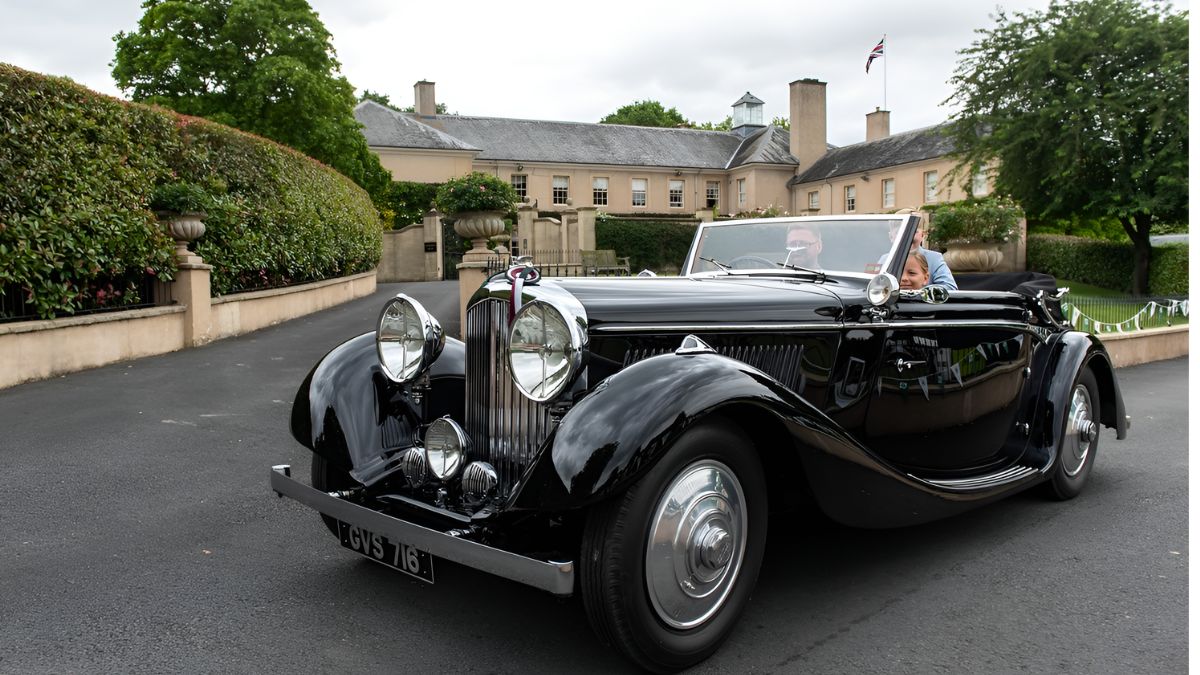Owning a classic car in the UK has always been more than a hobby — it’s a way of preserving history on wheels. Whether it’s a roaring Ford Capri, a perfectly restored Jaguar E-Type, or a charming Morris Minor, these vehicles represent British motoring heritage at its finest.
But in 2025, big updates from the Driver and Vehicle Licensing Agency (DVLA) are set to reshape how owners register, insure, and maintain their classic cars. These aren’t small tweaks — they’re part of a wider government effort to modernise regulations while preserving the nation’s historic motor treasures.
Let’s break down what’s changing, who it affects, and how you can stay compliant.
What Defines a Classic Car in the UK – Explained
In the UK, a classic car is officially defined as one that’s at least 40 years old. Once a vehicle reaches that milestone, it typically qualifies for certain benefits — like being exempt from road tax and MOT testing.
However, definitions can vary slightly depending on context. For example, insurers and councils may use their own age or usage criteria when assessing eligibility. What remains consistent is the value these vehicles hold — both as works of art and as living pieces of automotive history.
Why the DVLA Is Updating Classic Car Rules in 2025
The DVLA’s upcoming rule changes are designed to balance heritage preservation with modern safety and environmental standards.
While vintage cars are celebrated for their craftsmanship, many lack key safety and emissions features like airbags, anti-lock brakes, and catalytic converters. The DVLA wants to ensure that these older vehicles remain safe and responsibly maintained — without taking away their cultural value.
According to government officials, the new rules aim to:
- Keep the UK’s road network safer.
- Support accurate record-keeping for historic vehicles.
- Align with national carbon reduction goals.
- Strengthen insurance and compliance checks.
Updated Classic Car Tax Rules – What’s New
The good news: Classic cars will still enjoy tax exemption after 40 years.
The new twist? Owners will now need to prove their vehicle’s authenticity and age more rigorously to qualify.
Here’s what’s changing:
| Requirement | What It Means |
|---|---|
| Proof of Age | Owners must show registration or manufacturing documents verifying the car is 40+ years old. |
| Random Inspections | The DVLA can conduct checks to ensure the vehicle hasn’t been heavily modified. |
| Loss of Exemption | Cars that fail verification may lose their tax-free status. |
These measures are designed to protect the system from abuse — ensuring only genuine classics receive the benefit.
MOT Rule Updates – Safety First, Even for Vintage Cars
While cars over 40 years old remain MOT-exempt, the DVLA now recommends voluntary safety tests every 12 to 24 months.
This isn’t mandatory — but it’s strongly encouraged. Many insurers and car clubs already require up-to-date inspection certificates for participation in events or policy renewals.
If you’re a classic car owner, it’s wise to:
- Book periodic MOTs at garages specialising in older vehicles.
- Keep records of all inspections and repairs.
- Pay extra attention to brakes, tyres, and lighting systems.
After all, these checks not only keep you safe but also protect your car’s long-term value.
Insurance Changes for Classic Car Owners
Classic car insurance policies are also evolving to align with DVLA’s 2025 framework. Insurers are introducing new verification steps to ensure vehicles are accurately documented and maintained.
Expect insurers to request:
- Updated MOT or inspection certificates (even if voluntary).
- Proof of tax exemption approval.
- Confirmation of accurate mileage and limited use.
Failing to provide this information could result in policy rejection or voided coverage after an accident. It’s a good idea to speak with your insurer early to make sure your paperwork is current.
Environmental & Emission Rules – ULEZ and Beyond
Environmental regulations are tightening across the UK, particularly in cities expanding Low Emission Zones (LEZ) and Ultra Low Emission Zones (ULEZ) — including London, Birmingham, and Manchester.
While many pre-1983 classic cars remain ULEZ-exempt, owners are now required to verify exemption status through official channels such as the Transport for London (TfL) website.
If you drive your classic car regularly in these zones, consider:
- Registering your exemption status online.
- Checking for local council updates before travelling.
- Exploring eco-friendly retrofits (like cleaner fuel conversions).
These steps help ensure you avoid unnecessary charges or fines while keeping your vintage beauty road-ready.
What Classic Car Collectors Should Do Now
Here’s how to stay ahead of the 2025 regulation wave:
- Verify Your Vehicle Documents
Double-check your registration certificate, proof of age, and restoration receipts. Keep both digital and physical copies handy. - Schedule Routine Safety Checks
Even if MOT-exempt, regular inspections can save you from costly mechanical surprises. - Review Your Insurance Policy
Update your provider on DVLA requirements and make sure your coverage remains valid. - Confirm Tax and ULEZ Status
Reconfirm eligibility every year — especially if you move or modify your car. - Keep Records Organised
Having everything ready makes DVLA verification smoother and stress-free.
Why These Changes Matter
These reforms aren’t meant to discourage classic car ownership — quite the opposite. The DVLA says the goal is to support responsible preservation while aligning with modern safety and environmental priorities.
For owners, staying compliant means:
- Continued access to tax benefits.
- Safer and more reliable vehicles.
- Stronger insurance protection.
- Higher vehicle resale value.
Ultimately, these changes help secure the legacy of British motoring for future generations.
Frequently Asked Questions (FAQs)
Q1. Are classic cars still exempt from road tax in 2025?
Yes. Vehicles over 40 years old remain tax-exempt, but owners must provide proof of authenticity and may be subject to inspection.
Q2. Do I need an MOT for my classic car?
No, MOTs remain optional for vehicles over 40 years old — but the DVLA now strongly recommends voluntary testing for safety.
Q3. Will my insurance become more expensive?
Some insurers may raise premiums slightly due to added verification, but compliance ensures your policy stays valid.
Q4. Can I still drive my classic in London’s ULEZ?
Most pre-1983 vehicles are ULEZ-exempt, but you must confirm exemption on the official TfL website before driving in restricted zones.
Q5. What happens if I ignore the new rules?
You could lose your tax exemption, face fines, or have insurance invalidated. Always keep your paperwork and inspections up to date.
Conclusion
Classic car ownership in 2025 remains as rewarding as ever — but it now requires a bit more diligence. By staying informed, maintaining your vehicle properly, and keeping records current, you can continue enjoying your timeless machine without worry.
After all, these updates aren’t just about compliance — they’re about preserving Britain’s motoring heritage safely and responsibly for generations to come.



